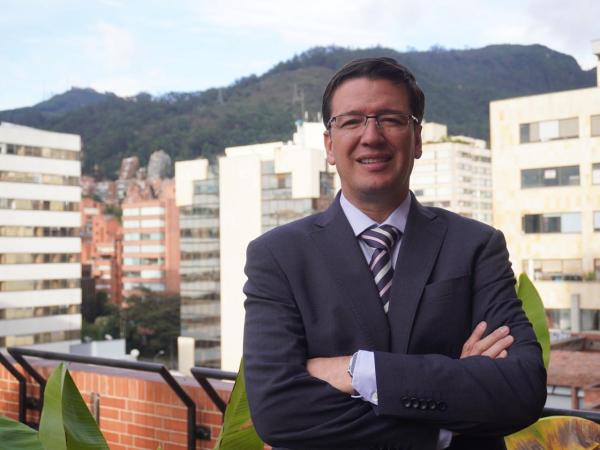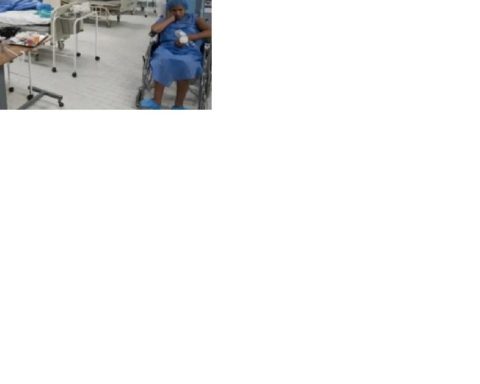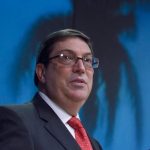With an industrial proposal for coffee marketing dynamics, the National Federation of Coffee Growers presented the Regional Industrialization Centers, with which they seek to integrate grain producers more into the value chain of the country’s most important agricultural product.
(Read: Are changes coming to the Juan Valdez brand? This is what coffee growers say)
Germán Bahamón, general manager of the union, He explained that the Neiva center alone cost $1.5 billion and that two more will open this year in Manizales and Bucaramanga. They expect a better production performance by the end of 2024.
What is the purpose of industrialization centers?
What we proposed last November to the Coffee Congress was to support the regions in the transition process within the value chain. We have felt that the regions may not have reached industrialization and that union support is key for coffee growers to feel calm and secure in moving through that chain.
We presented the development in the Fedecafé regional industrialization centers and proposed that this strategy would be gradually developed in the 15 departmental committees. The first of them opened its doors on Friday in Neiva and allows us to create this industrial experience of offering transformation services and commercial support to Colombian coffee growers, and in this case to those in Huila.
(Read More: This is the best place to buy coffee in all of Colombia, according to TasteAtlas)
What are you looking for with the centers?
As a guild, we have been transferring knowledge in agricultural practices with the extension and consensus service for coffee. We hope that Almacafé and Procafecol will now join us. Together we complete this chain and we carry the knowledge acquired over the years from the point of view of transformation and exportation that Almacafé has and marketing that Procafecol has.
The objective is to bring the trade union closer to coffee growers in the regions and support them with industrialization and marketing processes so that they can have more profitability in their business.
(See also: Sofia Vergara enters a new business with ‘Goddamn! Coffee’)
Colombian coffee
iStock
Is this done as an incentive to purchase crops or to have more products?
The coffee grower can arrive with his load of dry parchment and ask for a threshing process, a profiling service to identify the necessary roasting curve, to have the coffee roasted, to have it packaged and to have it delivered to him so that he can sell it. We also assist him in the design of the packaging so that it is appropriate and has the best conditions.
Today, it happens that a coffee grower wants to make that transition and finds a company or has to go to the capital to provide a service, but they do not accompany him and suddenly during the roasting process they can damage the product. Nothing is more important for a coffee than a good roasting curve, which can express the attributes of the cup and can deliver the quality that the coffee grower cultivates with great care.
That is what we want to do, for coffee growers to see the quality of the institution, which has been supporting them in agricultural practices, and now supports them in processing and marketing.
(Read: 16% increase in production in the first half of the year reinforces improvement in coffee growing)
When will the centers be available?
This year we started in Neiva and the next year we will be in Manizales and Bucaramanga. We will continue with a schedule that will allow us to have 15 departmental committees with these national coffee industrialization centers within three years.

Colombian coffee
iStock
How much did they cost?
We needed to show that the model worked and the first thing is always to take special care, because not only do we have to buy machinery, install it, adapt the physical space, but also adapt the companies within the grain so that they can relate to each other and can offer the best service.
The Neiva project is an investment of around $1.5 billion between equipment, physical adaptation and laboratory. We finance this with the profits that Almacafé is currently generating, a company that was previously generating losses, we have transformed it. That is why the resources are our own.
(See more: Coffee growers urge Colombians to consume 100% of the country’s coffee)
Is it a strategy for economic recovery?
Definitely. What we are looking for is to support this economic recovery in the regions, to see that there is investment in benefit of the development of our business. Each of these regional industrialization centers will create a brand that will have the distinctive seal of certification of origin.
This will allow us to begin to find the diversity of regional profiles in the country and the consumer will have an improved offer. The brand that we will launch for Huila, which is already duly registered and has the seal of certification of controlled origin, is called ‘Al Sur’.
(Read also: These are the departments that use the most fertilizers with a low CO2 footprint)

Colombian coffee
iStock
Production has been good, is there a risk with La Niña?
We have a positive outlook for this year. In the first six months we achieved 5.8 million bags, which is 16% more than last year. But if we also look at the moving year, Colombian production once again broke the barrier of 12 million bags.
This shows us that, having had a La Niña phenomenon that did not become severe but was moderate, which caused water stress and also allowed for significant fluorescence, we expect that in the second half of the year we will exceed 12.5 million bags in the total calendar year.
Today we are at 12.1 million bags, and by the end of 2024 we believe we can be above 12.5 million bags, which will be important for the Colombian economy and obviously for the economy of coffee-growing families.
(See: Is decaf coffee really healthier than regular coffee?)
Why China for export?
I come from the corporate sector and I have not seen a single company in the world that has not set its sights on markets like China, India and Indonesia. If you add them up, they are a third of the world’s population and have enormous potential.
Last year, my sales team and I set out to attack the Chinese market and we increased exports to that destination by 132%. We more than doubled sales volume and also made this country the sixth largest recipient of Colombian coffee in the world. There is a huge opportunity and, as I have said from the beginning, my job is not to produce coffee, but to generate demand so that those who produce it can do so profitably.
(Read More: Agricultural export volumes broke records since 1991)

Colombian coffee
iStock
Have you spoken to the new Minister?
I have already spoken with Dr. Martha Carvajalino and it was a very cordial conversation. We fully understand, as I told you, that she is the leader of Colombian agricultural policy and that the Federation is always her executive arm in the policy she decides and we will do so in a concerted manner. I hope to visit her very soon.
(Read: Coffee exporters prepare for EU regulations)
Do you expect the sector to apply the mandatory investments already in place?
At this time we will continue to explore these conversations with the Government, but there is still nothing material. The economic associations have worked in a coordinated manner with the Government, showing them from the business and financial point of view of the banks, if this is something that the country should get involved in.

















